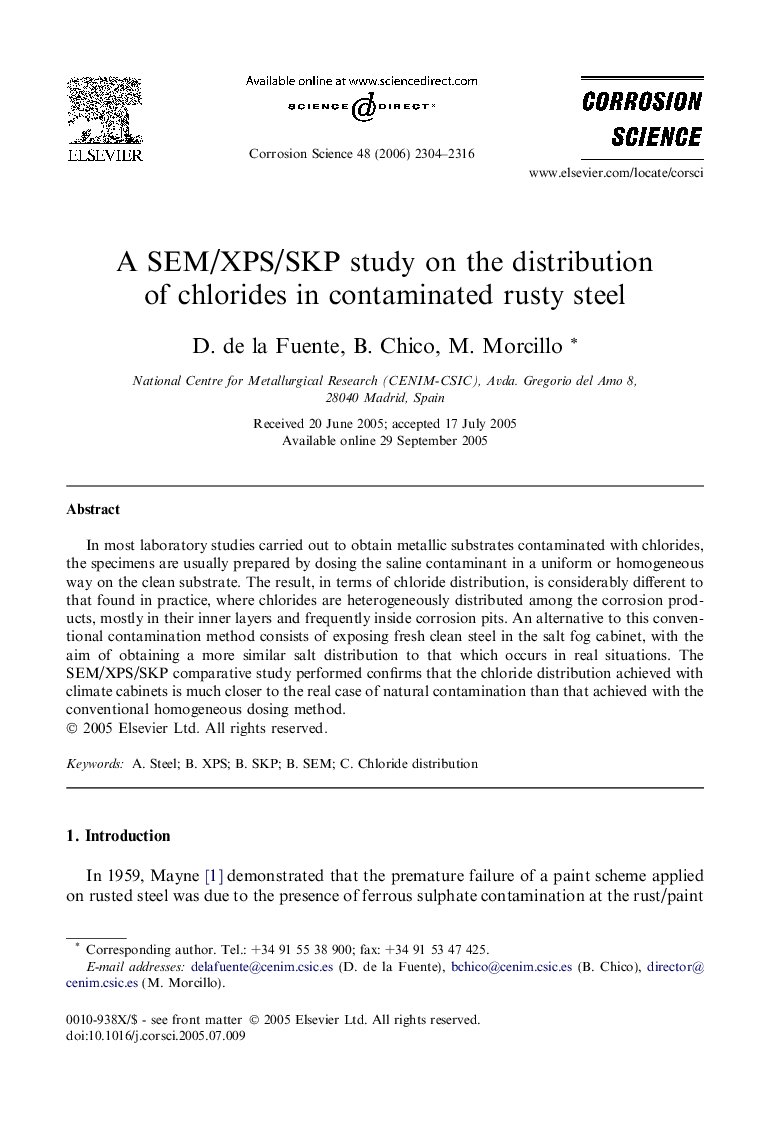| کد مقاله | کد نشریه | سال انتشار | مقاله انگلیسی | نسخه تمام متن |
|---|---|---|---|---|
| 1471708 | 990357 | 2006 | 13 صفحه PDF | دانلود رایگان |

In most laboratory studies carried out to obtain metallic substrates contaminated with chlorides, the specimens are usually prepared by dosing the saline contaminant in a uniform or homogeneous way on the clean substrate. The result, in terms of chloride distribution, is considerably different to that found in practice, where chlorides are heterogeneously distributed among the corrosion products, mostly in their inner layers and frequently inside corrosion pits. An alternative to this conventional contamination method consists of exposing fresh clean steel in the salt fog cabinet, with the aim of obtaining a more similar salt distribution to that which occurs in real situations. The SEM/XPS/SKP comparative study performed confirms that the chloride distribution achieved with climate cabinets is much closer to the real case of natural contamination than that achieved with the conventional homogeneous dosing method.
Journal: Corrosion Science - Volume 48, Issue 8, August 2006, Pages 2304–2316